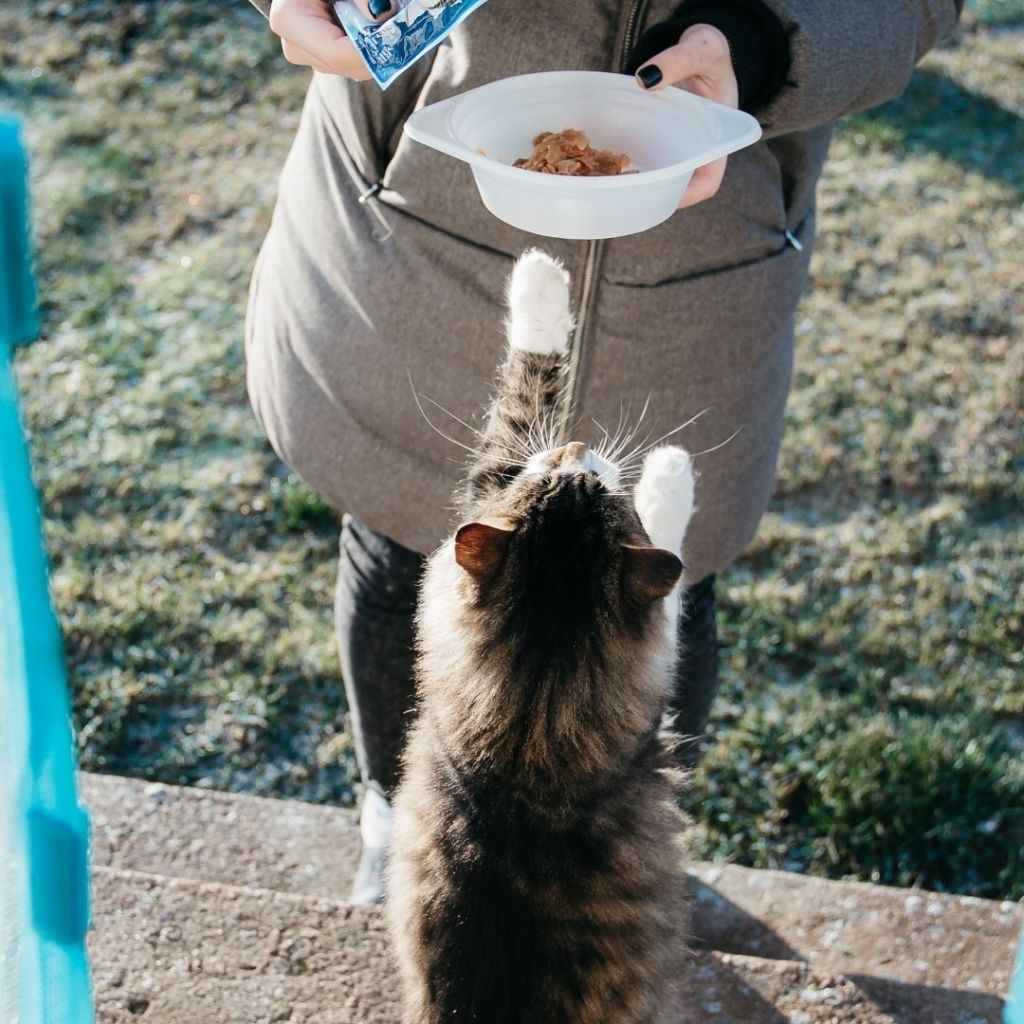
Can Cats Get Bored of Their Food? When Should I Change My Cat’s Food
16 Nov 2021.
You’re probably aware of how fastidious your feline can be about everything from their cat litter, to their grooming habits, to moving to a new home. But did you know your cat can get bored of their food too? Below, Cat in a Flat finds out why cats get bored of their food and what you can do to spice up your kitty’s mealtime.
Table of contents
Why do cats get bored of their food?
While Mr Whiskers may like consistency in most areas of life, it is possible for your cat to feel bored of the same food. Part of this has to do with the innate nature of cats as apex predators.
In the wild, a cat would hunt for their food and have access to a variety of prey—whether it be mice, birds, insects or other small creatures. Felines in the wild also have seasonal diets and eat different things at different times of year. This might explain why your cat is bored of their food; because there’s a lack of variety in their diet.
However, at times it might seem like your cat is bored of their food when this isn’t the case. Before you decide to change your cat’s food, make sure surrounding factors aren’t what’s causing Mr Whiskers’ boredom.
For example, if your cat’s food bowl is too light, it might slide across the floor. This can make it difficult for him to comfortably eat. Or perhaps the room where your cat’s food bowl is located is too loud. Loud noises can startle your kitty and they may avoid their eating area as a result.
Once your furry friend has a quiet place to eat and proper bowls to eat out of, they still may turn their nose up at dinner. This means it could be time to spice up your cat’s food bowl. Not to worry, there are a few ways to combat kitty food boredom.

How and when to change a cat’s food
First of all, proceed with caution when you change your cat’s food for another brand. It’s easy to feel frustrated when your kitty turns up their noses at new food, but be patient. It can take some work to learn what food your cat prefers, but it’s well worth it for Mr Whiskers’ physical well-being and general mental health!
Here are a few tips to help you spice up your cat’s food bowl:
*Transition to a new cat food slowly
Don’t throw out your feline’s kibbles just yet, the transition to a new brand should be slow and consistent. Cats are prone to digestive issues if their diet changes suddenly. This is why you should take several days to slowly adjust your cat to a new food brand.
Start by mixing a little of the new kibble brand with the old. Over a period of 7-10 days slowly increase the amount you’re mixing in until you’ve completely transitioned to the new brand.
If you’re changing your cat’s wet food, mix in some of their old dry food with their new wet food. If your furry friend shows any signs of gastric distress (such as diarrhoea, or if your cat is vomiting more than usual), go back to their original food immediately and consult Mr Whiskers’ vet before you try again.
*Avoid low quality cat food
With so many options out there, it may feel hard to know which foods are good for your kitty. Luckily, a wide variety also means you have a lot of choices to turn to when your cat seems bored of their food.
Do your research before changing your cat’s food. Check online reviews and reading up on the ingredients your kitty needs for a balanced diet. Avoid feeding your cat a vegan diet and aim instead for foods with a healthy balance of protein and veggies.
Try to buy locally and, if still in doubt, ask your vet for some suggestions. Every cat’s food requirements are different. Some kitties might need specific food to help manage their weight, others might thrive eating only grain-free food. Your vet can help you figure out what works best for your unique furry friend!
*Feed your cat a mix of wet and dry food
As mentioned above, cats need food variety. Sometimes, instead of switching out your cat’s food altogether, an easier solution is to give them diversity in texture.
Try feeding your feline friend a mix of wet and dry food. Be consistent when feeding your cat any sort of diet—whether it’s wet food a few times a week, or a mix every day. This way you’ll avoid digestive problems.
Cats also drink a lot of water and benefit hugely from having wet food as a part of their diet. But be careful about relying too much on your cat’s wet food to keep them hydrated. Watch out for signs like your cat always following you to the bathroom to drink out of the faucet. This could mean they don’t have enough access to other water sources.
*Make your cat’s meals more fun
In the wild, cats can spend hours (or even days) hunting for their food. However, domesticated cats, especially indoor kitties, don’t get that same amount of stimulation. Therefore, your cat may feel bored with their food because there’s no fun in it!
Try playing with your cat before giving them their meal. This replicates the feeling of hunting and stimulates your kitty’s brain. Also try hiding kibbles and treats around the house so your cat has to work for their food. A cat maze is another great way to get your kitty’s brain moving and make meal time more fun.
Cat sitters, always check beforehand which treats your kitty clients can or can’t have. When cat sitting a multi-cat household, be aware that each cat may have different dietary requirements.
Looking for more tips on how to keep your cat balanced and happy? You might like our blog posts on how to help your cat stay warm this winter as well as the basics of essential cat care.
- #catinaflat
- #pet care
- Cat Care


